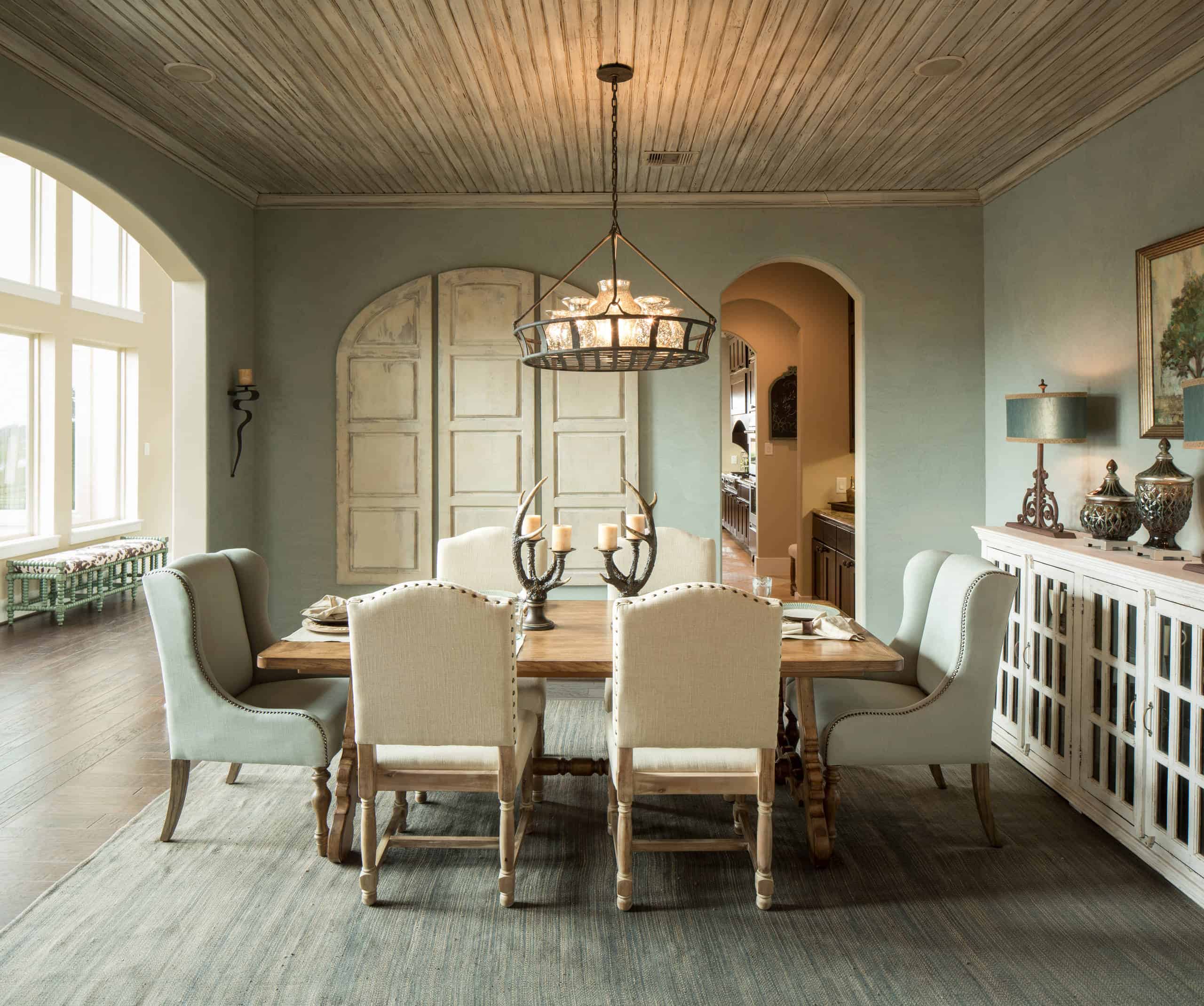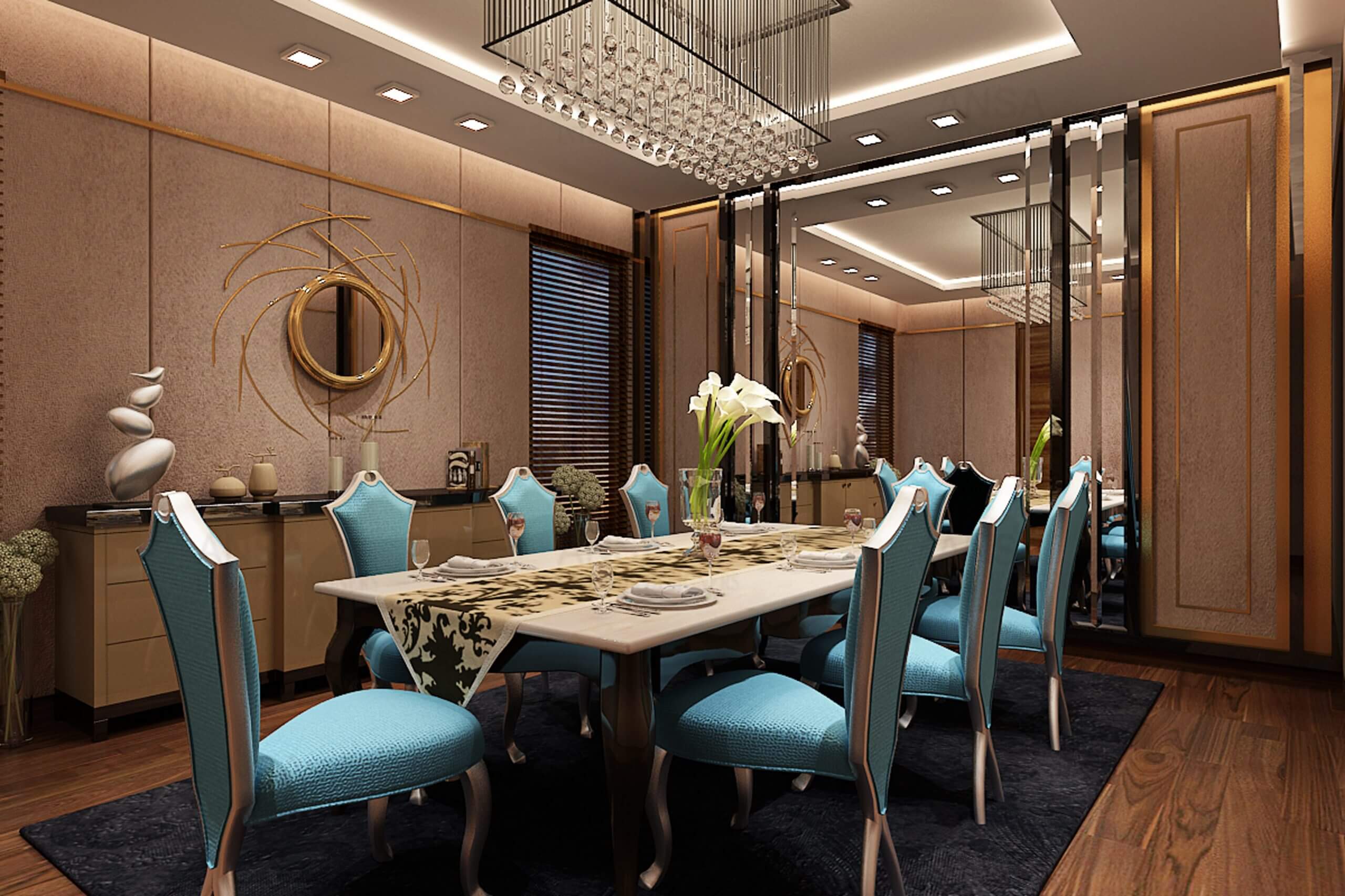Dining Room Color Schemes: Dining Room Interior

Dining room interior – The color scheme of a dining room plays a crucial role in setting the overall ambiance and atmosphere of the space. Different colors evoke different emotions and can create a variety of effects, from warm and inviting to cool and sophisticated. When selecting a color scheme for your dining room, it is important to consider the style of the room, the desired atmosphere, and the natural light available.
The dining room is often the heart of the home, a place where family and friends gather to share meals and conversation. When designing a dining room, it’s important to create a space that is both inviting and functional. For those who love the charm and character of a bungalow, incorporating bungalow interior design elements can create a warm and welcoming atmosphere.
From cozy window seats to built-in cabinetry, there are many ways to bring the bungalow aesthetic into the dining room, creating a space that is both stylish and comfortable.
Some popular color schemes for dining rooms include:
- Neutral Color Schemes: Neutral colors, such as white, beige, gray, and black, create a classic and timeless look that can be easily accessorized with a variety of colors and patterns. These colors are also a good choice for small dining rooms, as they can make the space feel larger and brighter.
- Warm Color Schemes: Warm colors, such as red, orange, and yellow, create a cozy and inviting atmosphere that is perfect for dining rooms where you want to encourage conversation and laughter. These colors are also a good choice for rooms with north-facing windows, as they can help to warm up the space.
- Cool Color Schemes: Cool colors, such as blue, green, and purple, create a calming and relaxing atmosphere that is perfect for dining rooms where you want to create a more formal or sophisticated setting. These colors are also a good choice for rooms with south-facing windows, as they can help to cool down the space.
When selecting a color scheme for your dining room, it is also important to consider the natural light available. Rooms with plenty of natural light can handle bolder colors, while rooms with less natural light may need to be painted in lighter colors to avoid feeling dark and cramped.
The dining room, a space for sustenance and gathering, echoes the professional realm of corporate office interior design. Both prioritize functionality and aesthetics, balancing comfort and productivity. Just as a well-designed office fosters collaboration and efficiency, a dining room becomes a stage for intimate conversations and shared meals, where the ambiance and decor contribute to the overall experience.
Dining Room Lighting

Adequate illumination is essential in a dining room, as it sets the ambiance, enhances the dining experience, and showcases the room’s décor. A well-lit dining space invites warmth, intimacy, and a touch of grandeur.
When selecting lighting fixtures, consider the size and style of your dining room. Chandeliers, with their intricate designs and cascading light, create a dramatic focal point. Pendants, suspended from the ceiling, provide focused illumination over the dining table. Sconces, mounted on walls, offer ambient lighting and can highlight artwork or architectural features.
Creating a Layered Lighting Plan
A layered lighting plan incorporates different types of lighting to create a balanced and inviting ambiance. Ambient lighting, provided by chandeliers or recessed lights, illuminates the entire room. Task lighting, such as pendants over the table, focuses on specific areas where tasks are performed. Accent lighting, including sconces or spotlights, highlights decorative elements or artwork, adding depth and visual interest to the space.
Dining Room Furniture

The dining room is the heart of the home, where family and friends gather to share meals and make memories. The furniture in this room should be both functional and stylish, creating a welcoming and comfortable atmosphere. Essential pieces of dining room furniture include tables, chairs, and sideboards.
Dining tables come in a variety of shapes and sizes, from round to rectangular to oval. The size of the table will depend on the number of people who will be using it and the size of the room. Chairs should be comfortable and supportive, and they should complement the style of the table. Sideboards are a great way to add storage space to the dining room, and they can also be used to display decorative items.
Styles of Dining Room Furniture, Dining room interior
Dining room furniture comes in a variety of styles, from traditional to modern. Traditional styles often feature dark wood finishes and ornate carvings, while modern styles are more streamlined and minimalist. There are also many transitional styles that combine elements of both traditional and modern design.
When choosing the style of dining room furniture, it is important to consider the overall style of the home. Traditional furniture will work well in a home with a classic or elegant style, while modern furniture will be more appropriate for a home with a contemporary or minimalist style.
Choosing the Right Size and Shape of Furniture
The size and shape of the dining room furniture will depend on the size of the room and the number of people who will be using it. A small dining room will require a smaller table and chairs, while a large dining room can accommodate a larger table and more chairs.
The shape of the table will also depend on the size and shape of the room. A round table is a good choice for a small room, while a rectangular table is a good choice for a larger room. Oval tables are a good compromise between round and rectangular tables.